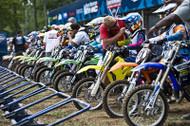Getting Started in motocross
Posted by Jsohua Mattie: Bikers Rights Australia on 26th Feb 2023
Getting Started in Motocross, Focusing on 50cc and 65cc
Here are some tips for young riders who want to get started in motocross. Generally, kids should use 50cc and 65cc bikes for motocross racing. There are gas-powered models, which are relatively faster and cost more. And there are electric models which are better for novice riders. But whichever dirt bike a parent chooses, ensure your child’s safety comes first.
As a motocross coach, I have a vast bank of knowledge and believe my advice can give you an idea on how to get started in motocross.
Getting the Right Bike
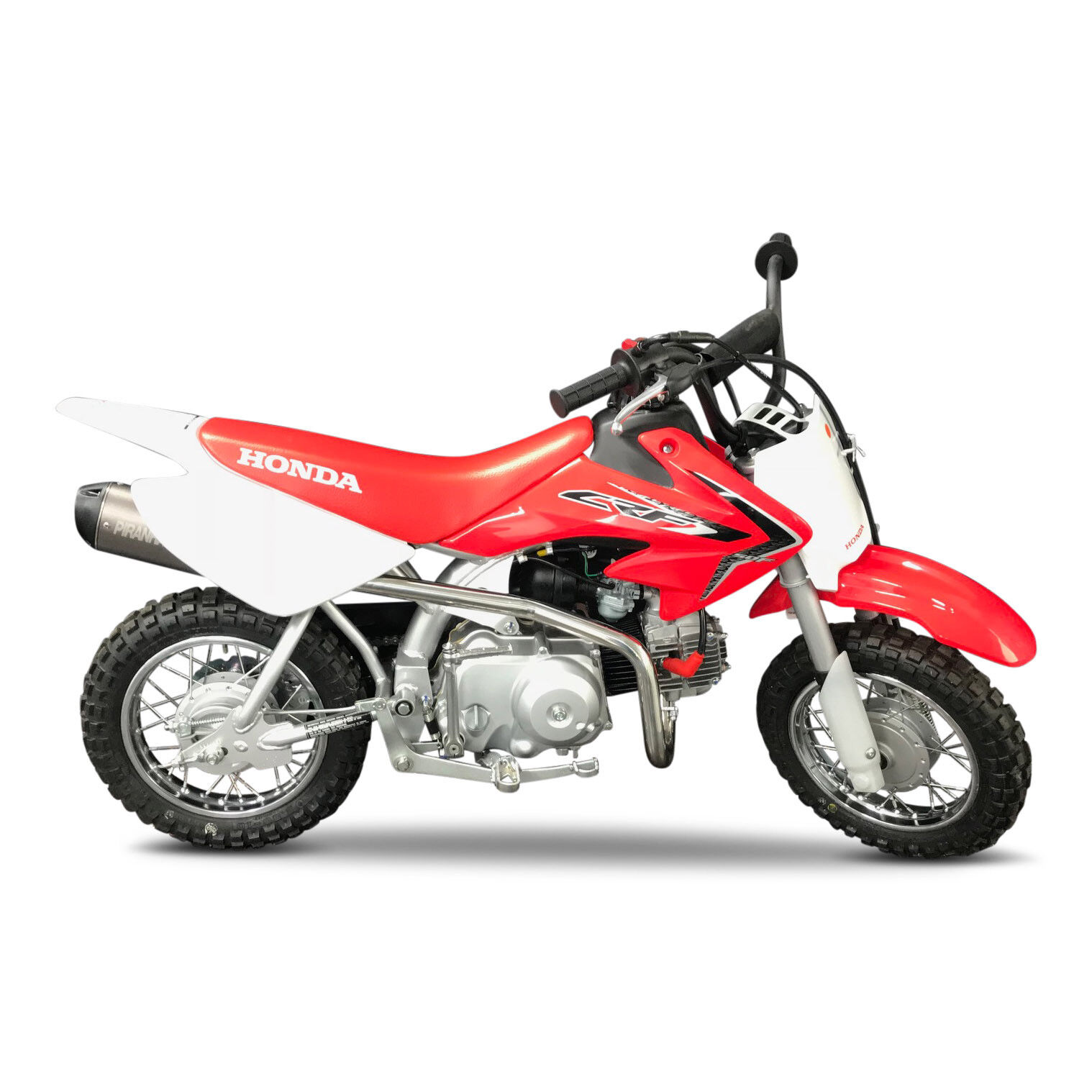
Find a quality dirt bike dealer specializing in motocross and have a good reputation. After researching different dirt bike models, go to the dealer and buy the bike of your choice.
When buying a bike, it is key that you purchase the right one for AMA racing. The AMA congress designs classes to fit a rider’s age, depending on the bike’s engine capacity.
For kids ages 4-6, you can get a 50cc 2-stroke or 4-stroke engine with a Max Front Wheel of 10”. But for kids ages 7-8, get a 50cc 2-stroke engine with a Max Front Wheel of 12”. Typically, kids aged 7-11 can ride a 65cc 2-stroke engine.
Furthermore, find a bike that suits your child’s size and allows the kid to comfortably put both feet on the ground. The seat height differs for kids of different ages. For kids ages 5–7, a seat height of 20–25 inches is ideal. The 8 to 9-year-olds should have a seat height of 22–27” while 10 to 11-year-olds should have a seat height of 26–31”.
Learn Riding Techniques
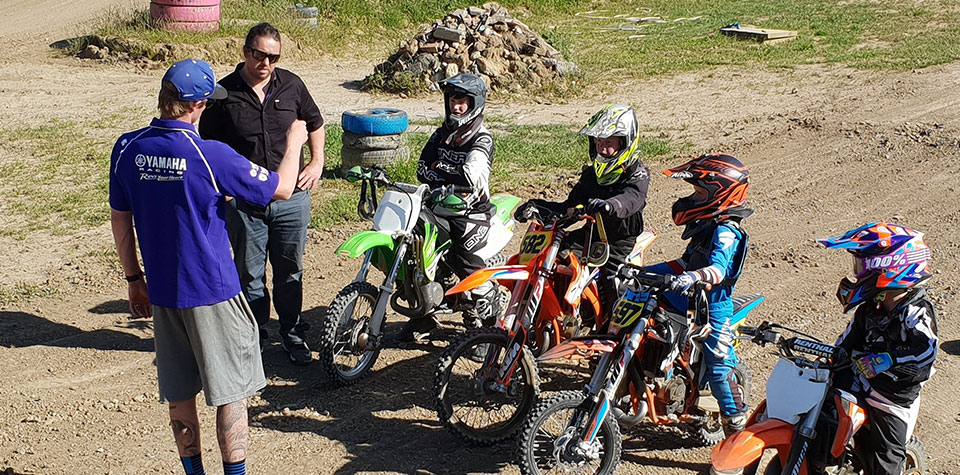
The best way to prepare for racing is by practicing more to improve your riding skills. There are some important skills to practice, as shown below:
Body and Leg Positioning
Learning how to position your body and legs is very key in motocross. It helps you balance the weight on the bike and control your handling.
To balance the bike, put your weight toward the back of the bike. In the straights, make sure you stand balanced on the pegs with your elbows high. Your knees should grip the sides of the bike when doing so to absorb impacts.
You can also use your legs while standing to shift your weight easily and to move the bike in the direction you want.
When braking, lower your body and lean forward almost at a 45-degree angle. Then, release the brakes first and sit on the tank before making a turn. To turn right, stick your left leg out while leaning forward, and do the opposite when turning left.
Additionally, you should be in the attack position and lean forward when hitting a jump. Proceed to the jump with your knees and your legs straight. This creates suspension, making it easier to shift the bike’s weight and control it in the air.
Gear Choice
Beginner riders may find the first-gear start a little difficult. To practice, sit on the bike with your feet planted on the ground, pull the clutch in, and select the first gear. Apply a little throttle while easing the clutch lever until the wheels start moving.
Ensure you do not dump the clutch too fast because the engine might stall. Also, do not wind the throttle on very hard. This will make the bike wiggly, and you will probably crash.
To develop your gear skills, remember that they are selected by pushing for first up to sixth gear. It is best to begin with lower gear and work your way up.
Changing the gear
The gears are simple to operate in automatic clutch or single-gear (electric) bikes. When you need to slow the bike down, you only need to shut the throttle and apply the brakes. However, semi-automatic bikes have no clutch, though they may have up to four gears.
To change the gear for a semi-automatic bike, hold the front brakes on from neutral to prevent the bike from moving forward. After that, click the gear lever down one click, release the front brake, and apply the throttle slowly. The revs will rise as the speed of the bike increases.
Launching with the Clutch
The function of the clutch lever is to control the clutch plates that engage the drivetrain. This is what allows the bike to accelerate. Pulling the clutch towards the handlebars disengages the motor, making it freewheeling.
Sometimes, you may not need to engage your clutch when riding fast. However, when in higher gears, most bikes will require some clutch to change back down to a lower gear.
Acceleration
Practice accelerating once you get comfortable with your bike. Remember that your body will naturally push back when accelerating. This is why you should stay forward and sit near the gas tank.
You can apply your accelerator smoothly by holding the throttle lightly. Holding the throttle harder could lead to an arm pump while holding it too loose could cause a loss in the grip of the handlebars. Once the bike gets to speed, lean forward and press the foot pegs down.
Safety Gear
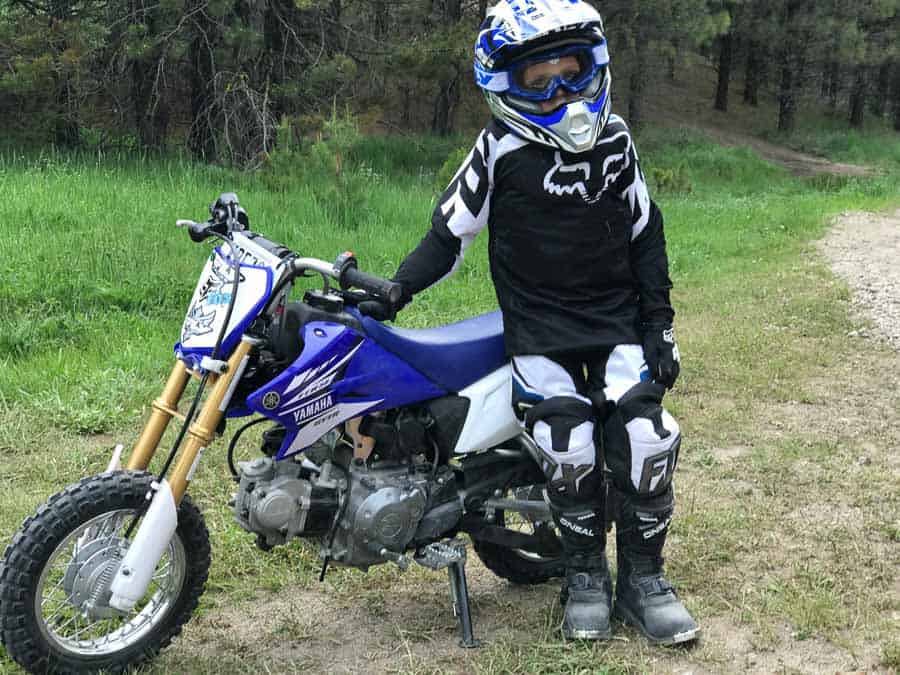
The rule of thumb for motocross racing is; to dress in case of a crash, not just for the ride. The chances of crashing are very high; the more gear you have on your body, the safer you are.
The helmet is an essential protection piece a beginner rider must have. Ensure it fits properly on your head, and you can fasten it if necessary. You should also have protective clothing, such as racing pants, long-sleeve shirts, elbow and knee pads, goggles, and riding boots.
Moreover, get body armor to protect the core from impacts or injuries. Young riders should practice riding with body armor because adapting can take time.
Starting to Race
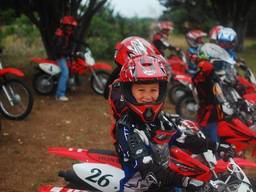
Pack everything you need prior to the day of the race so you don’t forget anything. On the day of the race, try to be there an hour early to have time to unpack and register for the race. You can also use the practicing session to warm up and familiarize yourself with the track.
Additionally, ensure you arrive at the staging gate 2–3 races prior to the race. The staging manager can allow riders to pick pins for selecting the gate area, or a computer can select the positions randomly.
General Guidelines
In any motocross racing, you must follow some rules to make the race orderly and successful.
On the track, riding while under the influence of alcohol or drugs is forbidden by the AMA rules. Also, avoid fighting, dirty racing, and profane language. This could get you penalized or even disqualified.
For the safety flags, yellow signifies a problem on the track, and you should be on the lookout to avoid the problem. You need to ride cautiously; no passing or jumping is permitted in the flagging areas.
Check if flaggers are directing you toward either side of the track. A red flag would indicate a hazardous situation on the track or a rider receiving assistance.
Note: For additional racing rules, you can check the AMA Rulebook and Supplementary Rules.
5 Best Dirt Bikes for Kids – Age 4 to 11 Years
With kids’ dirt bikes, you must be assured of throttle control, fewer breakdowns, and safe handling of the bikes. Here are our top picks for the best dirt bikes for kids.
-
KTM 50 SX Mini – Best Overall

KTM 50 SX Mini has a 2-stroke high-performance liquid-cooled engine that handles well on the trails. It has a fully automatic transmission and self-cleaning disc brakes.
The seat height is taller than other 50cc models, and the shocks are adjustable, making handling the bike consistent as the rider grows.
-
Yamaha YZ65 – Best Suspension
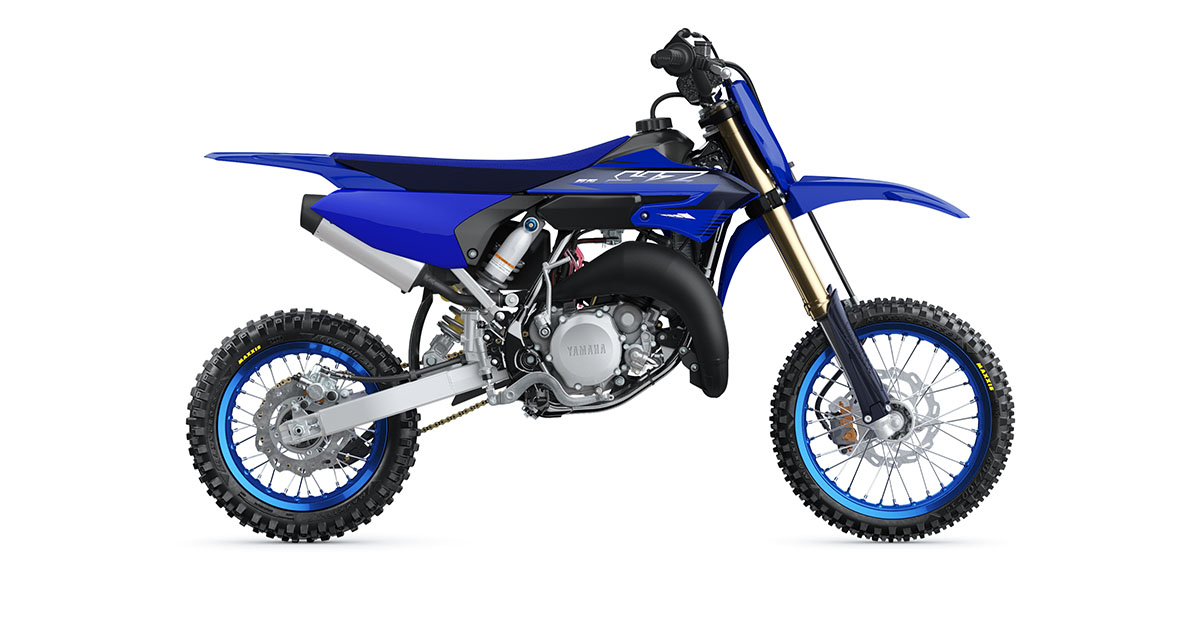
The Yamaha YZ65 was introduced in 2018 to compete with KTM and Husqvarna 65cc. The bike boasts a 2-stroke engine with a six-speed transmission.
YZ65 has a four-position adjustable handlebar clamp, brake levers, and an adjustable clutch. Also, the bike has a KYB 36 mm inverted fork and linkless KYB shock. These offer rebound damping adjustment and compression to fit the bike’s suspension.
-
Honda CRF50F – Throttle Control

The CRF50F is one of the best dirt bikes for beginners, with a good periodic filter, oil, and drive chain maintenance. This bike comes with a kickstart and controls similar to bigger bikes.
The Honda CRF50F has a 4-stroke engine and an adjustable throttle limiter. It also has a relatively taller seat of 21.6 inches that your child can ride even as they grow.
-
KTM 65 SX – Best Engine Performance
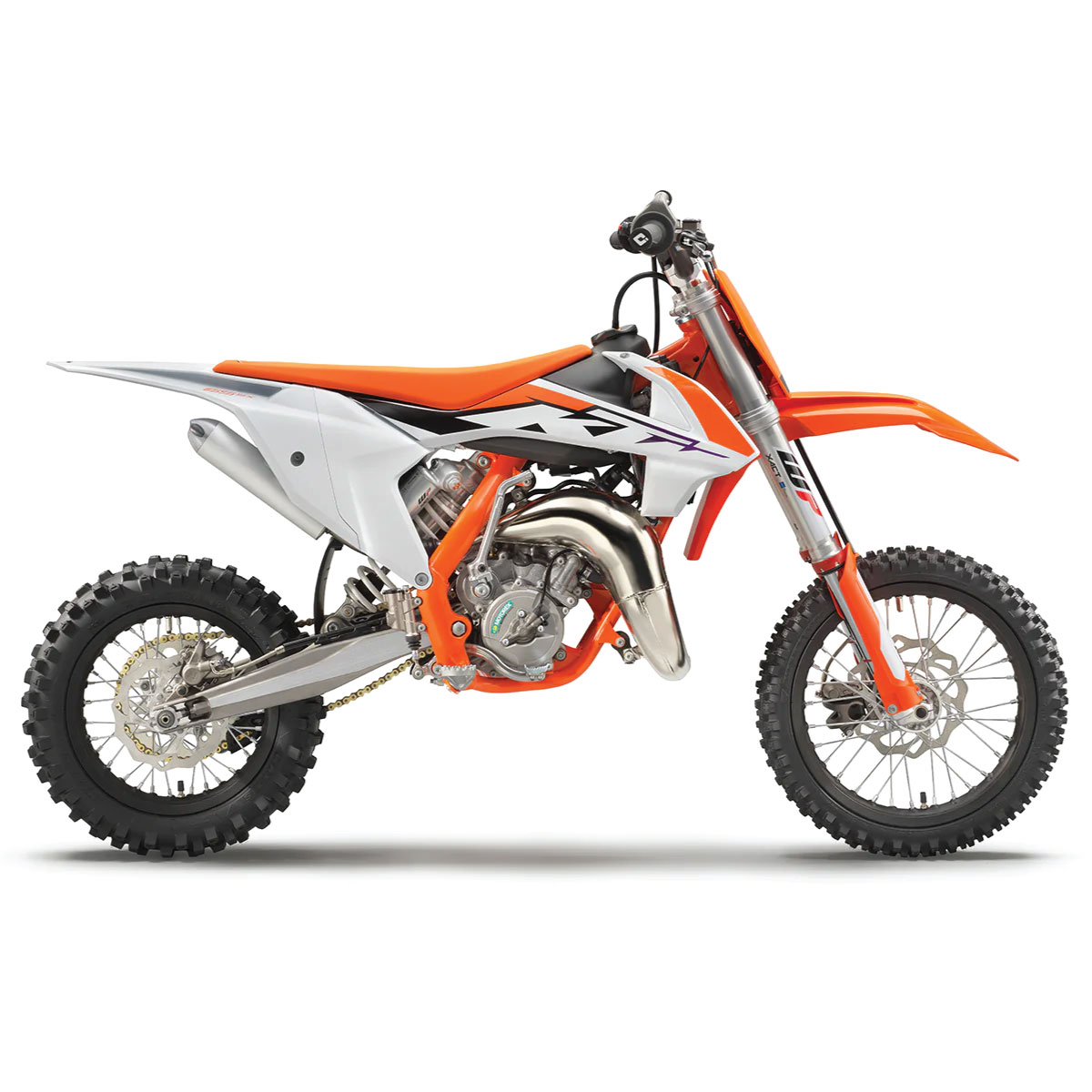
The KTM 65 SX is a beginner’s bike with several technological developments that add to its performance. It is a 2-stroke engine with dual cooling radiators that makes it a top performer.
This model has a manual clutch with a six-speed transmission. It also features an adjustable WP Xact 35 mm fork with AER technology and WPXact shock.
-
Kawasaki KX65 – Best Stopping Power
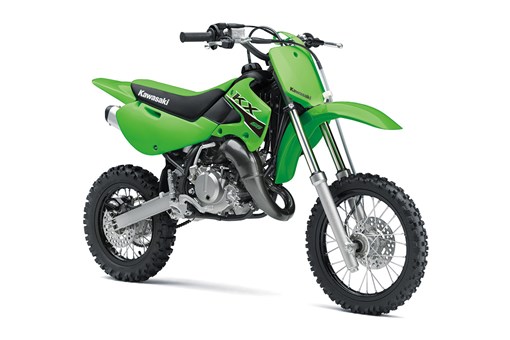
Kawasaki KX65 is an excellent motocross bike with a 2-stroke engine. It has a six-speed gear transmission supported by a steel semi-double cradle frame.
The KX65 has great stopping power and durable disc brakes, both in the front and rear. It also has lightweight aluminum rims that reduce unsprung weight.
Final Thoughts
Having your child on a motocross racing at an early age can be an exciting experience. Unlike other sports, motocross can help teach young people discipline, coordination, and responsibility. Usually, the 50cc and 65cc dirt bikes are an appropriate size for most kids’ skill levels. However, motocross is not as simple as professional riders make it seem. Your child will only develop some skills with time and practice.
Pro Tip: In motocross, riders and guardians are responsible for all their equipment. This can be relatively dangerous, which is why it is recommended to have adequate medical insurance to cover any possible injury.


